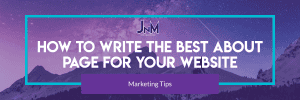
Image SEO: Top 5 Tips For Optimizing Alt Text and Title Text
Image SEO increases your website traffic, makes it more accessible, and provides a better user experience. It also helps increase your website’s ranking in search engines.
But the question is, what is it, and how can you do it?
In this article, you’ll find some essential details you need to know about image SEO. You’ll learn what it is, its benefits, and how to optimize alt text and title text for your website images.
Image SEO increases your website traffic, makes it more accessible, and provides a better user experience. It also helps increase your website’s ranking in search engines.
But the question is, what is it, and how can you do it?
In this article, you’ll find some essential details you need to know about image SEO. You’ll learn what it is, its benefits, and how to optimize alt text and title text for your website images.
What Is Image SEO
Image SEO is the process of optimizing your website images to make it easier for Google and other search engines to find them. Well-optimized images also help increase your website speed. Several factors help improve your Image SEO; some of these include:
- Using good quality images
- Including descriptive titles and captions
- Using proper filenames
- Adding your keywords
- Compressing Images
- Ensuring your image designs are mobile friendly
But one of the most crucial parts of image SEO is optimizing your images’ alt text and title text.
Benefits of Image SEO
Some benefits of good image SEO include the following:
-
Accessibility
Optimizing your images makes them more accessible for visually impaired people. It also assists search engines in identifying and showing your images in relevant search queries.
-
User Experience
Images optimization for SEO dramatically improves user experience. It is especially important for visually impaired people and visitors with low bandwidth connections. Even if the images aren’t loading on your website, the alt text allows users to understand what the image is about.
-
Organic Traffic
According to Moz, Google returns images for 28.2% of search queries. Image SEO allows your images to rank better on search engine results. This leads to more organic visitors, website traffic, and better search engine rankings.
Understanding Alt Text and Title Text
Alt text, short for “alternative text”, is a text description added to an image on a website. Its purpose is to provide a textual description of the image for visually impaired people using screen readers or those with slow internet connections.
Similarly, title text, also known as “title attribute” or “image title tag”, is an HTML tag. It provides additional information about an image on a website. When a user hovers over an image, the title text may appear as a tooltip.
Unlike alt text, which is used for accessibility purposes, the title text is primarily intended to provide more context or information about the image.
Tips for Optimizing Alt Text and Title Text
The following tips will help you optimize the alt text and title text for more effective image SEO.
-
Be Descriptive
Both alt text and title text should accurately describe the image. The goal is to provide a clear description that helps users and search engines understand the image contents.
If you have multiple similar images on a page, don’t use the same alt text or title text for each one. Instead, use unique attributes for each image that accurately describes its content.
-
Keep It Short
Alt text should be brief, typically no more than a few words or a short sentence. Longer texts can be overwhelming and confusing for users and search engines.
Don’t start with “ an image of” or “ a picture of” when writing an alt text. It’s already clear that your description is for an image. You don’t have to specify it.
Title text should be no more than 60 characters, including spaces. Always keep it concise and to the point.
-
Be As Specific As Possible
The first and foremost part of alt text is providing a clear image description for users and search engines. Always keep it as specific as possible. If the image is a product or a person, include specific details, such as the name, brand, or model.
The same is valid for the title text. It should always have an easy-to-understand description of the image. Use unique titles and avoid using complex words that might confuse users.
Using weird or stilted language can make it sound like it’s written for a machine. Always use natural language with easy-to-understand words.
-
Avoid Keyword Stuffing
Alt text and title text are great opportunities to use your target keywords. This helps you rank your website images higher for a particular search query.
However, stuffing keywords can land you in trouble with search engines. Always focus on writing an alt text and title that is descriptive and specific. It’s better to include one target keyword and leave it at that.
-
Include Branding
If the image relates to your brand or business, consider including your name in the title text, as it can help improve brand awareness and recognition.
It is also a great way to relate your brand to your website images. Branding helps you rank your website higher for particular search queries.
Here’s What A Good Alt Text and Title Text Should Look Like
To help you understand better, here’s an example of a good alt text and title text.
Let’s take this image of a cat sitting in front of a Christmas tree, for example.
Poor Alt Text: alt=”A cat”
Good Alt Text: alt=”A furry Siamese cat”
Best Alt Text: alt=”Long Haired Siamese cat in front of a Christmas tree”
Title Text: Long Haired Siamese cat in front of a Christmas tree
In conclusion, optimizing your images with alt text and title text is an integral part of SEO. It helps search engines understand their context and improve your website’s ranking in relevant search results.
Remember to keep these attributes concise, use descriptive language, and avoid keyword stuffing. For maximum SEO impact, compress your images and include them in your sitemap.



0 Comments